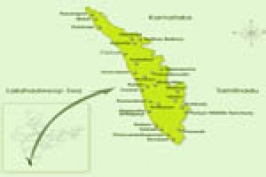Early Civilisation In Kerala

The earliest inhabitants of Kerala were the Pulayas, Kuravas and Vetas. It is at a much later time that migratory Aryan populations from the north landed and subjugated them through caste system. By the beginning of the Christian era, the Cheran Dynasty was spread up to Western Ghats. The armies of Mauryan Dynasty could not enter the lands of the Cheras. With time the rule of Cheran Dynasty declined, it coincided with the rise of the Brahmins in Kerala. By the 10th century, they were powerful entity from Gokurnum (North Kerala) to the Cape Comorin. These land owning class of Brahmins were well on their way to great wealth and power. To consolidate their power, they developed Caste System (segregation between classes of people). Lands were leased out to next higher castes for share-cropping, and these in turn would further be leased out to those lower on the caste hierarchy and to non-Hindus. The lowest castes of course were only laborers and were traded along with the land. In such a rigid hierarchy, the all-powerful Namboothiries were the unquestioned rulers. The Christians who had arrived from the Middle East in the 3rd century AD and the Muslims who arrived in the 8th century were generally traders and were not involved in this social segregation and generally kept aloof from the ambit of caste politics. The Jews who arrived Kerala in the early years of the Christian era were given privileges to trade and became an influential part of the melting pot of Kerala's population. Gradually Kerala entered a phase of feudal chieftains or warlords (naduvazhis). The Namboothiries anointed some. At the turn of the 11th century AD there was a power struggle in the caste system supported by the Landlords and ruled by the warlords. This in turn gave rise to instability in the absence of strong central leadership. Wars and conflicts were common. Ultimately three warlords emerged with some semblance of authority in their regions - the Zamorin of Calicut (Samuthiri of Kozhikode) to the North, Moopins of Perimpadappu (near modern day Kochi) in the central regions and chieftain of Kollam. This is precisely what the Europeans who found a sea-lane to the fabled land of spices and gold did. There was nothing anyone could do to stop the next five centuries of colonial rule. |